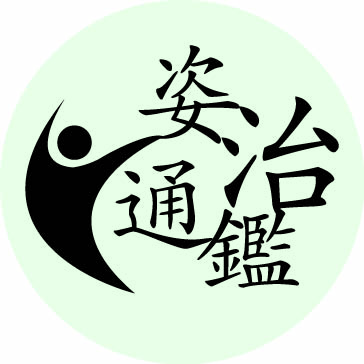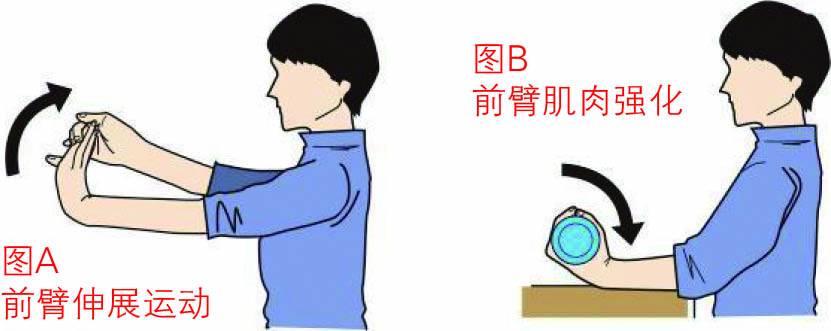Repetitive strain injury, overexertion, clerk and housewife also suffer from tennis elbow
[ad_1]
Text◆Zhang Kaiyin (physiotherapist)
Tennis elbow is very common. Don’t think it is limited to tennis players. Clerks, housewives, cleaners, chefs, and other sports enthusiasts who often use computers may also suffer from tennis elbow.
(Hong Kong News) When you pick up a coffee cup and find that your wrist is weak, you feel discomfort on the outside of your elbow when twisting a towel but there is no obvious trauma, and you feel pain and discomfort in your elbow when you extend your wrist, these are tennis elbow (medical name: lateral epicondyle tendinopathy , lateral elbow tendinopathy) common symptoms.
Long-term repetitive wrist flexion and extension movements
Tennis elbow is often caused by repetitive strain on the wrist or elbow or excessive force exerted on the wrist by mistake. The cause must first be understood from the tissue structure of the hand and forearm. There is a group of muscles on the outside of the arm, extending from the lateral epicondyle of the humerus to the wrist and fingers. This is the wrist extensor muscle. This group of muscles controls extension of the wrist and fingers. The wrist extensor muscles are used when we pick up or firmly grasp objects.
In daily life, repeated wrist flexion and extension movements for a long time,
Coupled with incorrect force, the finger and wrist joints are overextended,
This results in overuse of the wrist extensor muscles and tendons connecting to the lateral epicondyle of the humerus.
Micro-breaks and injuries slowly appear, leading to inflammation and pain.
Therefore, the medical name of tennis elbow is lateral epicondyle tendinopathy.
(lateral elbow tendinopathy).
Home exercises to train muscle flexibility
There are many symptoms of tennis elbow, including a little pain on the outside of the elbow, or discomfort and pain on the outside of the elbow when exerting force, which may extend into the forearm. In addition, the pain in the elbow increases when lifting heavy objects. Sometimes the hand feels weak when holding a racket or chopping vegetables, and even slight stiffness and swelling in the elbow.
Tennis elbow is a common chronic pain condition. Risk factors include frequent repetitive hand movements, such as those who need to operate a mouse or keyboard for a long time, and mechanics who frequently engage in maintenance work. Other risk factors include incorrect lifting methods, forearm lifting, etc. Insufficient flexibility and strength of the wrist extensor muscles, imbalance of muscles around the shoulders and arms, etc.
When an acute attack of tennis elbow occurs, if there is fever, swelling, etc., it is recommended to rest the hand more and temporarily avoid activities that may cause pain, such as playing racket sports, carrying heavy objects, and using a mouse for a long time.
Rehabilitation exercises can be started when the acute inflammation subsides. The following home exercises that can improve muscle flexibility and restore muscle strength can help treat tennis elbow.
Maintain healthy posture and prevent tennis elbow
To prevent tennis elbow, it is very important to maintain healthy posture every day. Here are some tips:
1. First, when carrying or lifting heavy objects, use your hands to distribute the pressure and protect your wrists and forearms from overloading.
2. For clerical workers, especially those who use computers for long periods of time, pay attention to the wrist posture when operating the keyboard and mouse. Try to keep your wrists as flat as possible to avoid excessive extension of the forearms.
3. Avoid long-term repetitive use of forearm muscles, such as cleaning windows, and try alternating left and right hands to relieve muscle tension. Adjusting work routines or alternating between different types of work is also a good idea.
4. Schedule short breaks regularly. If you need to work on the computer for a long time, it is recommended to change postures every 30 to 45 minutes, and do simple stretches and move the upper limb joints to avoid joint stiffness.
5. Use auxiliary tools to reduce the pressure on your forearms and wrists, such as using shopping trolleys or shoulder-type shopping bags to reduce the burden on your wrists and forearms.
Tennis elbow can be effectively prevented through proper daily care, adjusting and changing postures, avoiding excessive force on the forearm, and insisting on stretching and strengthening exercises. If discomfort persists, professional advice and treatment should be sought.

tennis elbowStillgolf elbowSo distinguish
Two common types of elbow pain are “tennis elbow” and “golfer’s elbow.” How to tell the difference?
Tennis elbow, generally refers to pain on the lateral side of the elbow, is caused by an injury to the common extensor muscles of the wrist attached to the lateral epicondyle of humerus. It is mainly caused by improper force and repetitive forearm activities such as lifting heavy objects, etc. Chronic inflammation caused by actions such as twisting screws or stirring.
Golfer’s elbow refers to pain on the inside of the elbow, which is caused by inflammation of the flexor muscles of the wrist that attach to the medial epicondyle of humerus. Most are related to excessive use of hand grip or repetitive wrist flexion movements, such as repeatedly holding or lifting heavy objects.

Text◆Wang Kaiting (physiotherapist)
Stretch + Wrist ExercisePrevent golfer’s elbow
Everyone has heard of tennis elbow more often, but have you heard of golfer’s elbow?
Many of the tendons that control wrist movements are attached to two prominent points on the humerus, the lateral epicondyle of the humerus on the outside of the elbow and the medial epicondyle of the humerus on the inside of the elbow. The muscles responsible for extending the wrist are attached to the lateral epicondyle of the humerus; the muscles responsible for flexing the wrist are attached to the medial epicondyle of the humerus.
People who work with long grips on tools are at high risk
Golfer’s elbow, officially known as medial epicondylitis, is caused by overuse of the wrist flexors, resulting in trauma and inflammation of the tendons and soft tissues. Patients usually feel pain on the inside of their elbows when they exert force on their wrists to lift heavy objects. In severe cases, they may find it difficult to twist a towel, pick up a teapot, sweep the floor, or even brush their teeth. This disease is common in housewives, golfers, baseball pitchers, or people who need to use hand tools for a long time, such as hairstylists, decoration workers, etc.
If the patient experiences pain, heat, and swelling on the inner side of the elbow, it is in the acute inflammation stage. It is recommended to apply ice to the affected area and rest the hand. You can also take non-steroidal anti-inflammatory drugs and analgesics prescribed by your doctor to relieve symptoms. After the redness, swelling, heat and pain subside, you can do stretching exercises and massage the affected area to increase the range of motion of the wrist and reduce tendon adhesion. After entering the chronic stage, patients should strengthen their forearm and wrist muscle endurance to reduce the risk of golfer’s elbow again.
Avoid doing repetitive movements for a long time
In daily life, you should avoid using your wrist or hand grip for long periods of time to perform repetitive movements, such as twisting a towel. If you cannot avoid using your hand grip, you should do more wrist or forearm stretching exercises to avoid muscle overuse.
Forearm stretching does not require any equipment and can be practiced anytime and anywhere. The patient straightens his left elbow, palm facing outward, puts his right hand on his left palm and pulls toward the body, stretching for 30 seconds (Figure A).
Forearm muscle strengthening exercises require a dumbbell. Hold the dumbbell in your hand with your palms facing the sky. Then place your forearm on the table (if necessary, put a towel on your forearm). Keep your forearm still and flex your wrist upward (Figure B). 15 times is 1 set, do 3 sets. Practice the two movements alternately with both hands.
[ad_2]
Source link

![[Love Wants Sexual Happiness Series 358]Find the culprit and overcome psychogenic erectile dysfunction. Don’t let pressure affect your sexual happiness.](https://chinathenews.com/wp-content/uploads/2024/04/171111-780x420.jpg)

![[Wanqingyi Care]My health, my rights, customized medical methods in the last stage of life](https://chinathenews.com/wp-content/uploads/2024/04/ZZ1-100-780x420.jpg)
![[Kidney Transplantation Special Topic]The survival rate of transplanted kidneys is high without dialysis treatment three times a week](https://chinathenews.com/wp-content/uploads/2024/04/1311-780x420.jpg)



